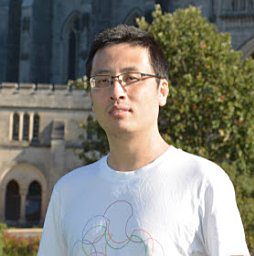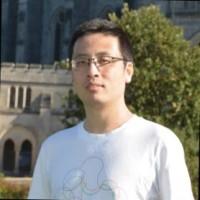event
CMP/AMO Seminar - Dr. Yahui Zhang, Johns Hopkins University - RVB theory of superconductivity in magic angle twisted bilayer graphene
Primary tabs
Speaker: Dr. Yahui Zhang - Johns Hopkins University
Title: RVB theory of superconductivity in magic angle twisted bilayer graphene
Abstract: TBG superconductor remains mysterious after 7 years. In the first March meeting talk by Pablo, the physics was proposed to be similar to doped Mott insulator in high Tc cuprates. However, theoretical efforts were largely distracted to the topological aspects and symmetry breaking orders based on momentum space Hartree Fock in the last a few years. Only recently the relevance of Mott physics has been finally recognized. In this talk, I will return to the most obvious theory of superconductor based on doping a n=2 Mott insualtor. We use the so-called topological heavy fermion model with f orbital on AA site and itinerant c bands. However, the physics is essentially captured in a f-orbital-only Hubbard model on triangular lattice, so band topology and the c band does not play any significant role other than renormalizing the dispersion. In our theory, there is already preformed pairing of the two localized electrons in the parent n=2 Mott insualtor, which is from an on-site spin interaction mediated by optical phonon. Then at doping n=2-x, we find an unconventional metallic state with small hole pockets (A_{FS}=-x/4) on top of these paired singlets. At lower temperature, a slave boson condenses, and the local pairing of neutral moments (or spinons) induce a secondary pairing for the mobile carriers and opens a smaller superconducting gap on the small Fermi surface. The supercnoductor naturally has two gaps: a pseudogap from pairing of spinons, and a smaller superconductor gap. Above Tc, superconductor gap is killed, but the pseudogap persists. This theory provides, to our knowledge, the first unified explanation of the experimental observation of the pseudogap and two-gap superconductor in TBG.

Short Bio: Yahui Zhang is an assistant professor at Johns Hopkins University. He got his PhD from MIT in 2019, mentored by T. Senthil. He did his postdoc with Ashvin Vishwanath and Subir Sachdev at Harvard. He is working on theory of strongly correlated electron systems, including morie system, cuprate, bilayer nickelate.
Groups
Status
- Workflow status: Published
- Created by: crichardson76
- Created: 11/03/2025
- Modified By: crichardson76
- Modified: 11/03/2025
Categories
Keywords
Target Audience

